Communicating with other motorcyclists while riding can become a somewhat creative endeavor often involving various gestures, hand signals, horn beeping and muffled shouting usually never heard outside a helmets confines. The Scala Rider Q2 Multi-Set communication system by Cardo Systems, Inc. remedies the problem, making helmet-to-helmet communication a much simpler and less eventful task.
The Scala Rider Q2 uses the latest Bluetooth technology to accomplish its mission. It not only allows riders (up to three) to speak to one another, but also talk hands-free on a (Bluetooth-enabled) cell phone, receive GPS audio instructions, listen to the radio, or listen to an MP3 player. All of this (except for the MP3 player) happens cordlessly no more wires to tangle or keep you attached to your bike.

A teardrop-shaped, rubber-encased headset serves as “control central” for the system. A microphone and two ultra-slim (0.18 inches thick) speakers and their associated wiring handle speaking and listening duties. All three of these merge into a clamp-type fastener that cradles the lower left side of a helmet and is tightened by two screws. No holes or drilling needed. The screws just tighten the clamp to the edge of the helmet. Cardo Systems states the Q2 will fit all full-face and 3/4 length helmets. A charger, a carrying case, an MP3 cable and various installation aids come with the kit, which retails for $395 for the two-unit Multi-Set.
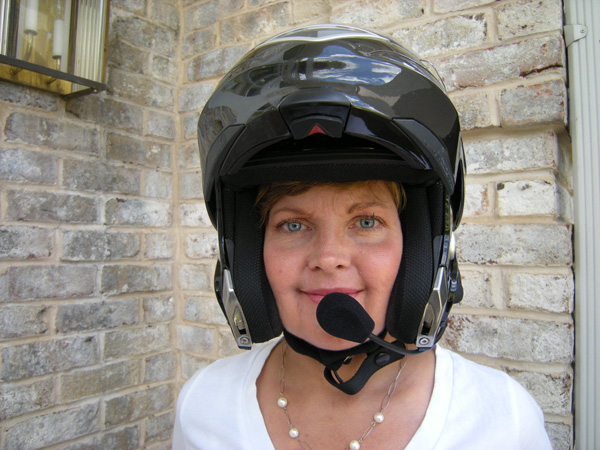
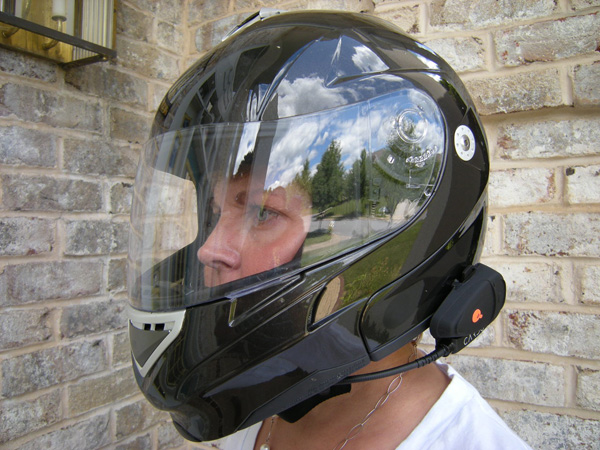
Promotional literature claims installation only takes five minutes. Id agree if you have three hands. If not, plan on needing more time and finding another set of hands to steady the helmet. However, installation is fairly simple and the instructions well written and easy to understand. Basically, you screw the clamp to the helmet with a supplied Allen wrenchone side of the clamp on the helmet’s exterior, the other between the shell and internal padding, positioning the clamp so the attached microphone sits directly in front of your lips. Should the clamp not fit over the helmets shell, you can glue the clamp to the helmet (parts for that are included).
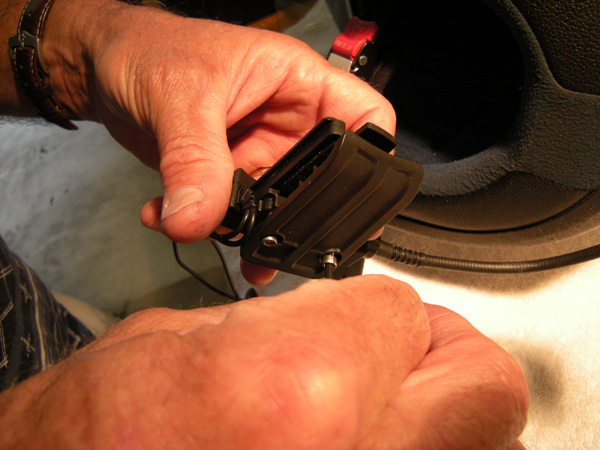 |
 |
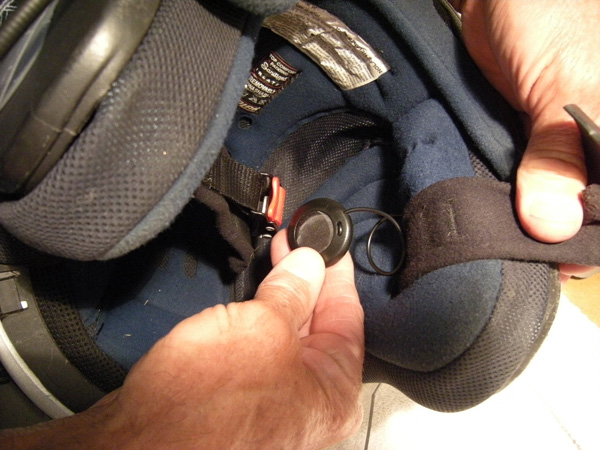 |
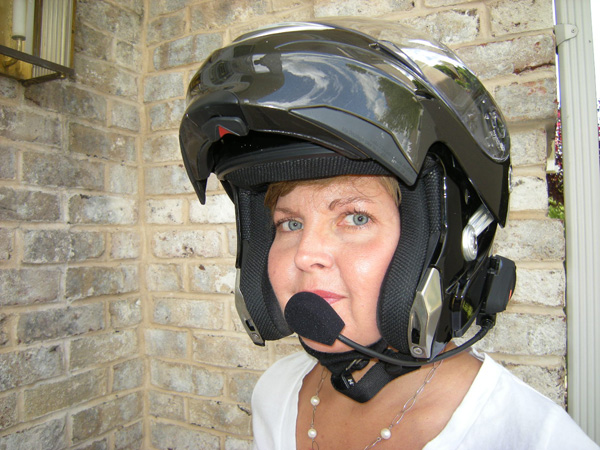 |
Communicating with another rider requires “pairing” the two headsets thats Bluetooth talk for the process of allowing one device to “speak” to another. Its an easy procedure requiring nothing more than a Bluetooth-enabled mobile phone or a GPS system.
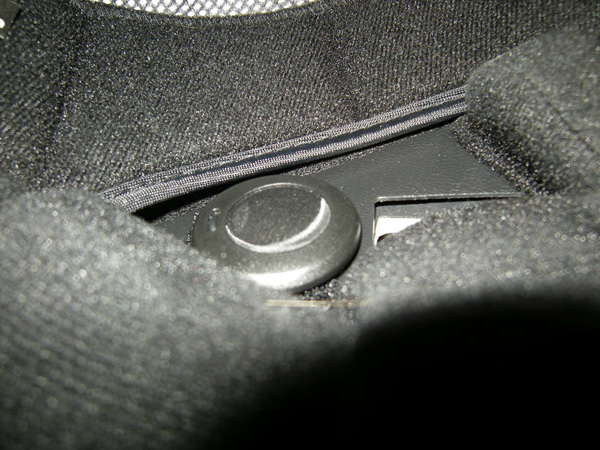
Large easy-to-locate buttons simplify control of the headset no fumbling here, even with gloved hands. A forward button powers the system. A large rearward button controls the radio and six station pre-sets. Upper and lower buttons regulate volume or manually change radio stations.
However, most of the units operation needs no hands at all, a truly cool feature. To initiate communication with another headset, simply speak. To answer your phone, say hello. Simply stop talking when the call is over, and the Q2 hangs up. You can even use voice commands to dial a number. The Q2 uses a noise-cancelling, high impact balancing microphone with automatic volume control, meaning volume increases along with the ambient noise level and driving speed the rider doesnt need to manually adjust the volume.
My husband, Tim, and I tested the Scala Rider Q2 on several trips. I wore a full-face helmet and he wore a three-quarter helmet. Id have to rate overall sound quality as pretty good, though I heard definite wind noise from his end. The automatic volume control works well and the new full-duplex technology eliminates “walkie-talkie” syndrome, where only one person can speak at a time. The Q2 allegedly operates within a 3/10 of a mile range not far, but adequate as long as you stay close together and dont let many hills separate you. My biggest disappointment came from the battery life. The literature states the units provide eight hours of talk time, but the most we received was five hours not even enough for a long days ride. To my mind, long trips to new locations are when communication would be most essential, but the Q2 didnt deliver on that end. Also, though purportedly weather resistant, no promises exist regarding how the Q2 would fair in a downpour.
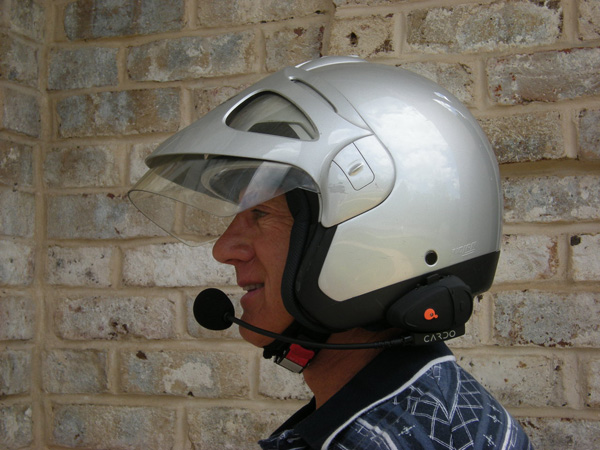
The Scala Rider Q2 offers the latest technology and easy installation for riders seeking motorcycle communication. My only issue was with the battery life. For more information about this communication system visit CardoSystems.com.

I enjoyed the article very much as my son and daughter and I are planning a trip to Sturgis in 2012 and are looking for a good communications system for all of us. I really enjoyed the rider feedback, specially from “womenonwheels.” (Trying to get my daughter to join them.)
I have used the Scala Q2 Multiset for about 10 months and have some comments to add regarding this unit. The reviewer did a great job in describing the use and installation of the units. Like her, it took me longer than five minutes to install the clamp. However, I also installed my friends unit and the second one went quicker (learning curve!). I also purchased a couple of extra mounting brackets/booms and mounted them on our 3/4 helmets. Each time, I got quicker.
Personally, I cannot say enough good about the the Cardio Scala Q2. It's not perfect, but what technology is? As a matter of fact, between the Scala and my GPS, I would be hard-pressed to say which one I consider “more important/useful.” Being able to speak with my riding partner(s) has proven to be something I find extremely useful. It allows us to communicate what is going on with the traffic around us; route changes; stuff in the road; if we need to stop, etc., without relying on vague and sometimes unseen hand signals. It's also been a godsend a couple of times to calm each other down in frightening situations (such as the 75 mph cross-winds we encountered in WY).
The Scala Q2 is rated at 500m/1640 feet and not 3 miles as the reviewer states. Even so, this unit has the longest range compared to the competition (unless someone has something new out I'm not aware of!). Personally, I have found the range to be sufficient since we typically don't get far apart. If we do get separated, we always have our cell phones. For those times we have gone out of range the units sync back up when we're close enough again.
As far as battery life, I've only had it go off during a ride twice and that was when it wasn't fully charged. So, my experience is that eight hours is possible. On our 2300 mile trip to Sturgis with some long days none of our batteries ever ran down. We do carry a cigarette charger for it (had a Powerlet installed on the bike) just in case.
That trip also gave me plenty of opportunities to try it out in the rain, so I can vouch for it holding up in a downpour!
You can make them either voice or push to talk activated. To save battery life, they go to sleep after 30 seconds of quiet (on voice activation). I find it stays on if it's windy out. In those instances, I just take it off voice activation. That helps battery life.
As far as wind noise from your buddy depends on the conditions. I can always tell when she has her shield open. I knock my volume down a notch and the wind noise often goes away. I read where someone put a piece of tape on the back of the mic/boom that points forward (away from the mouth) and that it really helped. Makes sense, but I haven't tried it.
I've found the sound quality to be excellent –speaker placement is critical as the reviewer states. When using the phone, the person on the other end always reports it sounds great and says they cannot tell I'm on a bike (and I ride a Harley!).
Also, I've found only one person can speak at a time. I'm not sure about the “full duplex” part. Maybe they've updated the Q2 Multiset since I purchased mine. My experience has been, even when synced up with a third rider, only two people can communicate at a time and the other one cannot listen in. Cardo's Web site claims something else, so I'm not sure if it's just me either misunderstanding and not knowing how to operate the units or it's just mis-information on their site.
I have paired my Scala with my iPhone and Garmin Zumo 550. This is a huge plus. I especially like hearing the GPS directions rather than having to take my eyes off the road to look at the map. I find it much safer.
I have read about the “soon to be released” G4 model (spoke with a Cardo rep at Sturgis about it also). It is still in testing. It will have a much longer range (up to a mile I hear) and will supposedly allow up to four people to communicate concurrently. It will also be A2DP Bluetooth, which means it transmits in stereo unlike what is currently available through Cardo. Will also be backwards compatible with other Scalas.
I realize headsets aren't on everyone's “must-have” list, but since I tend to go on longer rides with other people, I have grown so accustomed to it. I now see it as an essential piece of equipment.
My husband and I also purchased the Cardo Multi set. We went on a 6,700-mile trip out west three weeks ago and they worked great. The sound is clear as a bell. We were caught in several downpours and had no problem with them. However I was very concerned when we were caught in a bad lightning storm not knowing if they could be more susceptible to a lightning strike.
We had no problem with the battery providing we would charge them each night. We were often on the road for 12 to14 hours sometimes traveling more than 600 miles a day. Since we traveled in all kinds of weather and construction road conditions my husband could give me warning of hazards up ahead.
When we first got them there was an issue with one of the batteries. We sent it back and received a replacement with in five days. They have great customer service too. We also have extra mics so we can switch from one helmet to another. We are lost without them.
After shopping around and looking a few different types of headsets my boyfriend and I purchased the Scala Rider headsets for both the short and long trips we do on our Harleys. Yes there is some wind noise but don't have trouble communicating and do enjoy the fact that we can converse during our ride. It certainly beats the hand signals you see alot of riders doing while trying to get their message across to other riders when on their bike. Thumbs up from me!
My husband and I bought this system last year and love it. Initially I liked it because it was a hands free system. I can ride and concentrate on the road yet still talk to my husband. We don't have phones so I don't know how well it works with them but it does have a FM radio tuner that I can listen to and it goes right off when the other person starts to talk then resumes when the conversation has stopped.
We bought these at Americade and while we are sitting in traffic with loud engines all around us we can carry on a conversation and hear each other very well. I highly recommend this system to anyone.
I have purchased two units, one for my husband and one for me. It is really awesome. The only problem so far is that my husband wears a full face helmet and it is sometimes difficult for him talk, as the space is quite restricted.
I bought the Scala Rider a few months ago for my husband and I, and I absolutely love them. We have taken a couple of trips that were seven or more hours long and we never encountered any problems with the units. They cover a pretty good distance depending on the terrain. My husband and I both received work related phone calls while on the bikes and the people on the other end could not believe we were actually riding while talking. When a call is received by one person, the system will block the other person from even hearing that a phone call has come in. Phone calls are completely private.
The aux hook up for the iPod or the GPS worked great too. (Garmin is not compatible with the Bluetooth for the Scala Rider – we just use the aux cable) I found these units for much less at HansenEnterprises.net ($249.99) for two units. I ordered them on Tuesday and had them by Friday. Great group to order from – just ordered my three unit for our biking group because they will all sync up. I do suggest that you might want to order a car/bike charger if you worry about the battery running out.
I have the multiset that I use it with a friend while riding. It's great and you can find them for about $300 if you shop around.
They work great even at a fair distance apart. I have it set up on a full-face and on a half helmet. It doesn't work quite as well on the half-helmet (can't place or take phone calls at all due to the wind noise), but I can still talk if I pull over and I can listen to the radio or mp3 player just fine. Works like charm on the full-face helmet, though.
Sure makes riding much more enjoyable. I highly recommend it!